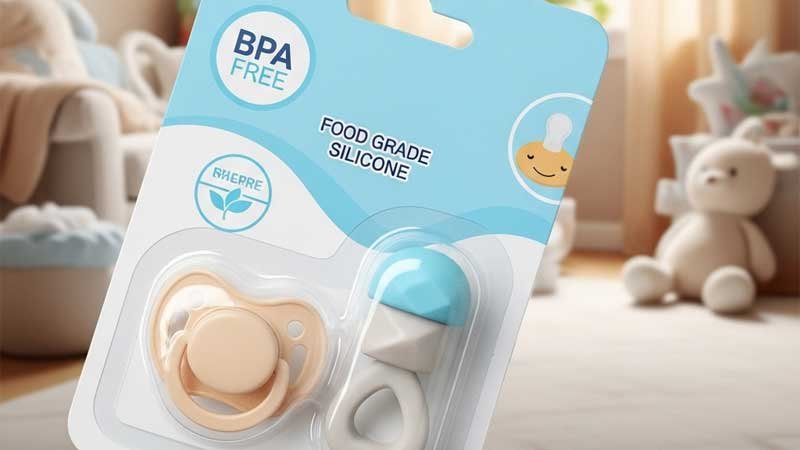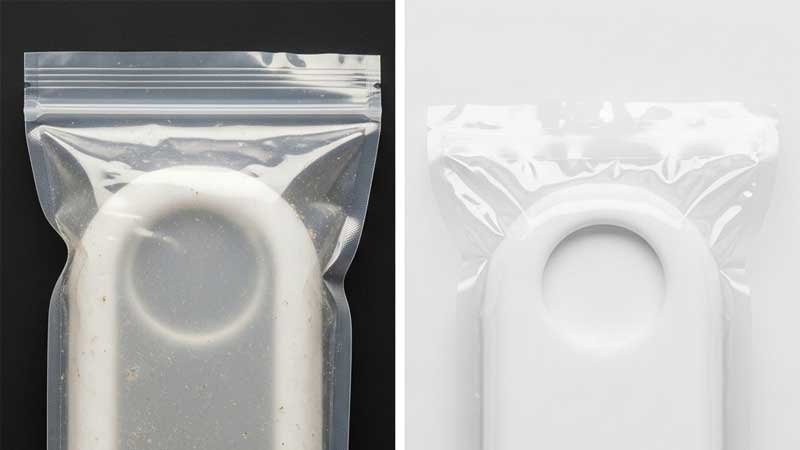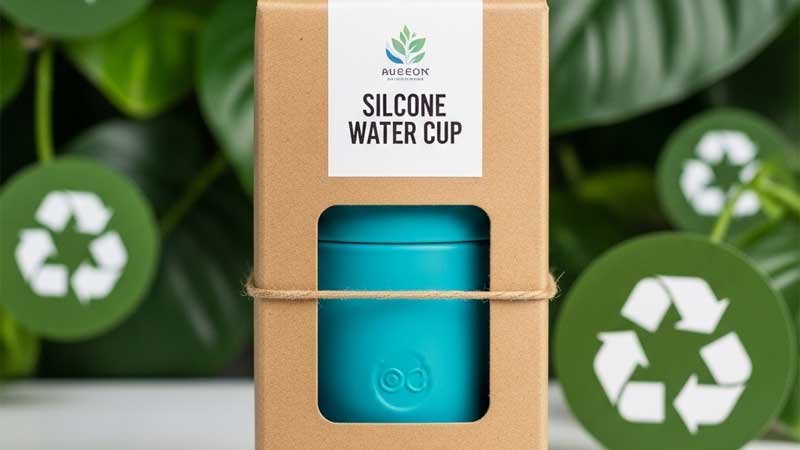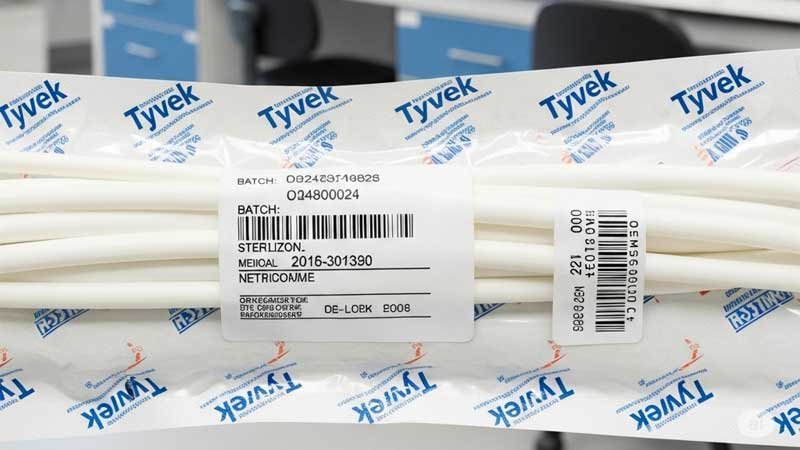In the silicone product industry, choosing the right packaging is not a simple task. It affects product safety during transport, brand image, regulatory compliance, and customer satisfaction.
This article will walk you through how to pick the most suitable packaging for different types of silicone products, from multiple angles and with practical guidance.
What Key Factors Should You Consider Before Choosing Packaging?
Choosing the right packaging isn’t always straightforward. There are many factors that can affect your decision, from the product’s shape to your market channel. The table below outlines the key things to think about.
| Category | Details |
| Product Type | Is it a soft kitchen item or a complex industrial part? Does its shape deform easily? |
| Material Traits | Silicone attracts dust, holds static, and absorbs odors. Will the packaging affect it? |
| Market Position | Is the product for retail export, online sales, or industrial supply? Each has different needs. |
| Branding Needs | Do you need a printed logo, eco-friendly packaging, or user instructions? Should it reflect sustainability? |
| Order Volume | Small batches may suit simple packaging. Large orders often need automated packing and stackable designs. |

What Are the Common Packaging Types for Silicone Products?
Silicone products come in many forms, from baby items and kitchen tools to industrial parts and medical supplies. Each product type and use case may call for a different kind of packaging. Choosing the right type helps protect the product, improve user experience, and reflect your brand’s professionalism. Here are some commonly used packaging types in the silicone industry and where they work best.
| Packaging Type | Description | Best For |
| PE Bag / OPP Bag | Low cost, transparent, easy to label. Can include seal stickers or hanging holes. | Industrial parts, accessories, basic dust protection. |
| Zipper Bag (Resealable) | Easy to open and close, reusable. Supports logo or label printing. | Kitchen tools, baby products, online orders. |
| Blister Tray / Clamshell | Rigid, dustproof, clear display. Custom inner cavities possible. | Retail items, shaped baby teethers, premium parts. |
| Paper Box (Kraft/Color) | Adds branding value. Good for stacking. Full-color printing available. | Gift items, kitchen sets, e-commerce packaging. |
| Vacuum Pack | Airtight, dustproof, space-saving. Ideal for sterile or clean storage. | Medical-grade silicone, food-safe products, dust-sensitive items. |
| Custom Inserts (EVA/Foam/Cardboard) | Offers support and shock absorption. Great for fragile or high-value items. | Medical tubing kits, precision parts, complex shapes. |

What Special Packaging Requirements Do Different Industries Have?
Different industries have unique needs when it comes to packaging silicone products. Understanding these specific requirements helps ensure the products stay safe, functional, and trusted by end users. Below are key considerations for several main industry segments.
Baby and Maternity Products: Safety Comes First
For baby silicone products, packaging must meet the highest safety standards. Materials must be non-toxic and odor-free, without releasing any harmful substances. Seals should be secure to prevent children from opening them by accident. Labels should clearly state terms like Food-Grade Silicone and BPA Free to build trust with parents. The visual design should feel gentle, reliable, and friendly to match the expectations of this target audience.
Food-Contact Products: Clean and Informative
Silicone kitchen tools and tableware must use packaging that complies with food safety standards such as FDA and LFGB. Food-grade inner bags or vacuum-sealed packaging are common to help prevent contamination during storage or shipping. The packaging should also include full usage details, like temperature range, cleaning instructions, and safety notes. This kind of information not only protects the product, but also helps users feel well-informed before use.
Medical and Care Products: Cleanliness and Traceability
Medical-grade silicone products are often used in direct contact with the body, so their packaging must be very clean, tightly sealed, and structurally stable. Common options include medical-grade PE bags, paper–plastic composite bags, or Tyvek sterile packaging. Some products require sterile packing in cleanroom environments. The packaging should also handle sterilization methods like irradiation, steam, or ethylene oxide without losing its shape or seal. Important info, such as lot number, production date, expiration date, and sterilization method, should be clearly marked for future tracking and quality control.
Industrial Parts: Functional and Efficient
For industrial silicone components like seals, pads, or insulators, packaging focuses on dust protection, anti-static properties, and shock resistance. Simple but durable options like PE bags or foam inserts with outer cartons are commonly used. Labels on the outside should show the product code, batch number, and intended use for easier warehouse handling and shipment. Since these products often go through multiple rounds of loading and unloading, the packaging must also offer good stackability and compression resistance to keep logistics smooth and product loss low.

How Does Packaging Affect Cost and Logistics Behind the Scenes?
Packaging is often underestimated in the overall cost. But your choice of packaging can significantly affect material costs, labor, shipping efficiency, and warehouse operations. For large-scale production, it becomes a hidden cost that adds up quickly.
Material cost comes first. Simple PE bags are low-cost and suitable for bulk shipments, but they offer limited protection and visual appeal. Blister trays and printed boxes cost more, but they provide better product protection and support a stronger brand image, especially for retail or online sales. The right material depends on your product positioning and customer expectations.
Labor and equipment are another key factor. Basic packaging fits well with automated lines, helping boost packing speed. In contrast, complex structures, like trays plus folded boxes and seals, may need extra labor or custom machinery. This becomes more costly when order volumes are small. It’s wise to review the assembly process early, so you don’t face extra work later.
Shipping efficiency also matters. Good packaging should do more than protect.It should save space and stack easily to lower shipping costs. Ask practical questions: Can the items be nested? Do they fit standard cartons? Are you wasting container space due to poorly sized packaging? These details directly affect shipping efficiency and cost per unit.
Finally, consider storage compatibility. Good packaging should work well with barcode systems, allow easy labeling, and support fast sorting and inventory checks. For businesses handling many SKUs or batch numbers, packaging that’s easy to identify and consistent in structure can make warehouse work much smoother.

How Do You Test Packaging Quality?
Good packaging needs to be drop-resistant, crush-proof, non-toxic, and easy to identify. To make sure the packaging holds up in real-world conditions, you need to run a series of standardized tests. Below is a list of common packaging tests and what each one is designed to check. These tests help you evaluate packaging performance from different angles.
| Test Type | Purpose |
| Drop Test | Makes sure the product stays safe when the package is dropped during handling or shipping. |
| Compression Test | Checks if the packaging can handle stacking and pressure without bending or breaking. |
| Material Testing | Confirms the materials meet standards like RoHS, REACH, or FDA, and don’t contain harmful substances. |
| Transportation Simulation | Simulates the full logistics journey to verify protective performance. |
| Print & Label Test | Ensures labels stay attached and the printing stays clear and durable throughout storage and transport. |
How Can You Work Effectively with a Packaging Supplier?
To get packaging that works well and fits your brand, close teamwork is key. Start by clearly sharing the details of your silicone product, like size, shape, softness, how it’s used, and any special needs such as food-grade or medical-grade packaging. This helps your supplier focus on the right things.
It’s best to plan packaging early, even during the product sample stage. Work on packaging and product design together. By testing and adjusting in time, you can avoid problems during mass production.
Also, talk through all label and barcode info. Decide where they go, what size they should be, and what material to use. This keeps things smooth when shipping, storing, or passing checks.
Last, confirm the lead time and stock plan for packaging materials early. That way, you can avoid delays when it’s time to ship.
Good teamwork and clear steps will help your packaging process stay on track.

Conclusion
In the silicone industry, product quality is key, but packaging is your brand’s first impression. It doesn’t just protect the product. It also reflects your brand value. To stand out, you need packaging that fits both your product and your market.
If you’re looking for the right packaging solution for your silicone products, feel free to reach out. We offer rich experience in custom packaging, with one-stop support from structural design and sample testing to full-scale production.